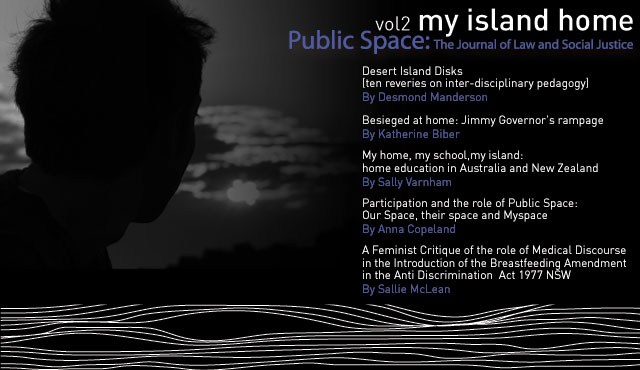Desert Island Disks: Ten Reveries on Inter-Disciplinary Pedagogy in Law
Main Article Content
Abstract
In this essay Professor Manderson defends the use of inter-disciplinary methodologies in teaching law. Focusing in
particular on images and texts of no more than a page's length, the essay insists that a whole curriculum could be
devised around these pictures, sounds, and stories. Yet legal teaching, reflecting the character of legal texts in
general, has been relentlessly long-winded and linear. They direct us to one conclusion to the exclusion of all others;
they close options rather than open them. This is no way to learn: it is untrue; it is tedious; it excludes us from
ourselves participating in learning. Other forms of expression have more to say and say it differently. A picture for
example has a density to it in its depiction of the relationship of ideas and forces which can be both easy to take in
and complex to decipher. Its ability to communicate paradoxical, ambiguous, or double-edged thought repays
continuing reflection. Other forms of expression welcome our thinking instead of merely forcing us to submit to its
logic. We are embodied beings not logicians. Words are often such abstract ghostly emanations. The physicality of
sound or vision draws out memories and associations which offer each observer inimitable divergent paths to
interpretation. The reciprocity thus forged between writer and reader, teacher and student, is a grossly under
exploited pedagogic resource that provides to all parties an unparalleled richness and discursive power.
particular on images and texts of no more than a page's length, the essay insists that a whole curriculum could be
devised around these pictures, sounds, and stories. Yet legal teaching, reflecting the character of legal texts in
general, has been relentlessly long-winded and linear. They direct us to one conclusion to the exclusion of all others;
they close options rather than open them. This is no way to learn: it is untrue; it is tedious; it excludes us from
ourselves participating in learning. Other forms of expression have more to say and say it differently. A picture for
example has a density to it in its depiction of the relationship of ideas and forces which can be both easy to take in
and complex to decipher. Its ability to communicate paradoxical, ambiguous, or double-edged thought repays
continuing reflection. Other forms of expression welcome our thinking instead of merely forcing us to submit to its
logic. We are embodied beings not logicians. Words are often such abstract ghostly emanations. The physicality of
sound or vision draws out memories and associations which offer each observer inimitable divergent paths to
interpretation. The reciprocity thus forged between writer and reader, teacher and student, is a grossly under
exploited pedagogic resource that provides to all parties an unparalleled richness and discursive power.
Article Details
Issue
Section
Articles
Copyright in the manuscript remains with the author(s). The author(s) grants the University of Technology, Sydney a licence to exercise any exclsuive rights of the copyright owner required to publish, distribute and advertise PublIc Space: the Journal of Law and Social Justice.
